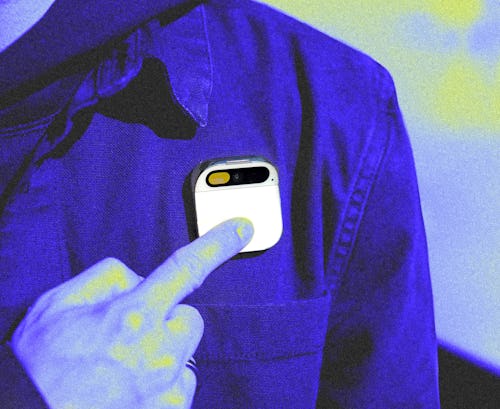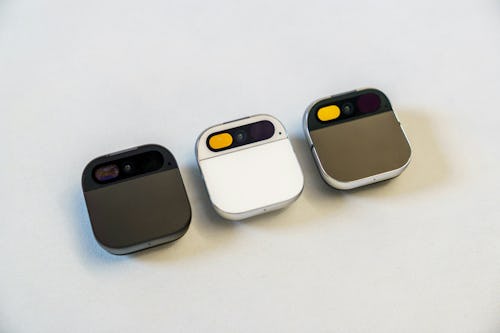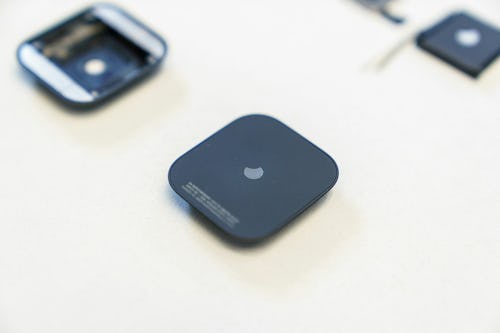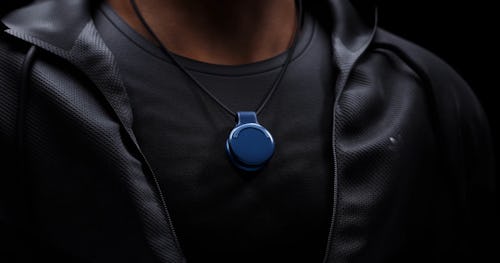
The further on from the Ai Pin’s troubled launch we get, the more convinced I am that Humane got more than a few important ideas right.
For example, there is an opportunity for a device designed around keeping you from interacting with a screen, and it can be handy to have a voice assistant that isn’t chained to your smartphone. The Ai Pin feels more readily available, personal, and in a few rare instances, faster to press and ask than a Google Home or Siri on my iPhone. That’s worth something.
When I was able to forget that the Humane Ai Pin was a miniaturized smartphone preheating my upper chest, the AI gadget really was magical. In the few days since Humane released its big 1.1.4 update, rather than randomly getting hot on its own, the Ai Pin only gets toasty if I use its “Laser Ink Display” projector for too long. It’s faster, thanks to GPT-4o, and much better at understanding what I’m saying, too. That convenience, however, has come with one major caveat: how I attach it to my body.
To make it last more than a few hours, the Ai Pin needs to be boosted with a magnetic Battery Booster that extends battery life and attaches the device to my clothes. It’s ingenious on one hand, and a horrible compromise on the other. Proof positive that just because the idea is right, it doesn’t mean we don’t still have a long way to go before we figure out where we’ll interact with computers on our bodies.
Your Grandma’s Brooch

From the minute the lid was taken off what the Ai Pin actually is, people have said that a smartwatch could easily fill the same role. A modern smartwatch like the Apple Watch Series 9 has microphones, a speedy onboard chip, and a wireless connection to the internet — why couldn’t it be your connection to AI? Apple didn’t demo Apple Intelligence happening on an Apple Watch, but one imagines it could at least be a point of contact for the new Siri.
The upside of smartwatches — they largely stay out of sight — is also a downside when it comes to being useful for multimodal AI. You have to lift up your arm to speak a request and see or hear a result, and unlike the Ai Pin, there’s no camera for any kind of visual search or identification. The Ai Pin’s existence as a “pin” lets you place it anywhere, particularly near your mouth and eyes, but that size and shape have some obvious drawbacks.

Humane crammed many of the components that typically fit in multi-inch-long smartphones, and at least one that doesn’t, into a pin body the size of your iPhone’s camera bump. The “Perpetual Power System” that the Ai Pin uses to allow for hot swapping battery packs is a clever way around the naturally smaller battery that has to fit in the Ai Pin. The much smaller battery means it’s not powerful enough to last a whole day, so it’s continually refilled by the same component you need to stick the Ai Pin to your clothes in the first place. But as early reviewers have attested, it made wearing the Ai Pin physically uncomfortable. The Verge’s review described the heat from the Ai Pin’s battery as “like a hand warmer against my skin.” Per Inverse Deputy Editor Raymond Wong’s review, “sometimes it was warm enough that I had to take it off.”
You don’t have to wear the Ai Pin long to notice other problems that you can’t fix with a software update. The device is dense enough on its own, but with a Battery Booster attached to the back, it makes most shirts sag. The Battery Booster magnet is strong enough that using the Ai Pin on my base layer, I’ve pinched myself putting it on. Paradoxically, the Battery Booster magnet is still weak enough that Wong has had the Ai Pin get knocked off more than once. I understand the design decision that went into the pin part of the Ai Pin, but there have to be other options than attaching a brooch to my jacket. Right?
How Do You Attach a Computer to Your Body?

Humane does appear to be exploring other options. In a video the company published on March 20, 2024 essentially reintroducing the Ai Pin in general, Humane appeared to tease not just clothing designed to accommodate the Ai Pin, but a necklace accessory that would allow you to wear the Ai Pin without using a magnet. On the company’s Discord, users have shared DIY versions of the necklace that you’ll occasionally see pop up on social media too. Considering how annoying swapping Battery Boosters is, this would be a welcome addition.
Humane designed the Ai Pin to lock if it’s removed from a Battery Booster or other official accessory for an extended period of time to protect your data in case someone snatches it off your shirt. Entering your PIN every time you attach a new Battery Booster has proven so frustrating that the 1.1.4 update included a six-second grace period you can enable if you’re annoyed by it. Humane is also working on a gesture unlock feature that lets you swipe on the Ai Pin’s touchpad as an alternative. Clearly, we’re still figuring out this whole “pin” thing.
Outside of Humane, there’s no real consensus on how these AI gadgets should be worn, though. The first version of Tap’s wearable uses clip-on off-the-shelf hardware, but the company claims to be considering a V2 design that could be magnetically attached to a bracelet, necklace, clip, and more. The Limitless Pendant started as exclusively a necklace, but is apparently now going to work as either a magnetic clasp you can attach to a shirt collar or dangle from a string.
No one is sure what works and everyone is trying things. When there’s — I’m being extremely optimistic here — the opportunity to release a product as iconic as Apple’s iPod headphones and as useful as an iPhone, everything could be spaghetti or a wall.
Too Personal To Be One Thing
The reality is, if AI gadgets are going to catch on — and a big part of that depends on people getting a taste for their “unfinishedness” — they can’t just be one thing, like a pin, necklace, or clip. They need to be able to be whatever fits the individual person, and that could change day-to-day, hour-to-hour. That looks less like the seductive all-in-one design of the Ai Pin, and maybe something more unassuming, projector-free, and modular.
There will still be smart glasses, smartwatches, and AI-infused wireless earbuds, because they’ll just be one potential avenue to access the same AI models and services. The Battery Booster might be one of the many reasons Humane made the Ai Pin a pin, but a future product will probably have to be driven more by what will help more people wear it, than what increases battery life. If that leads to a bigger or heavier device, so be it. There can’t be just one way for an AI gadget to work.
FTTT
0 Comments